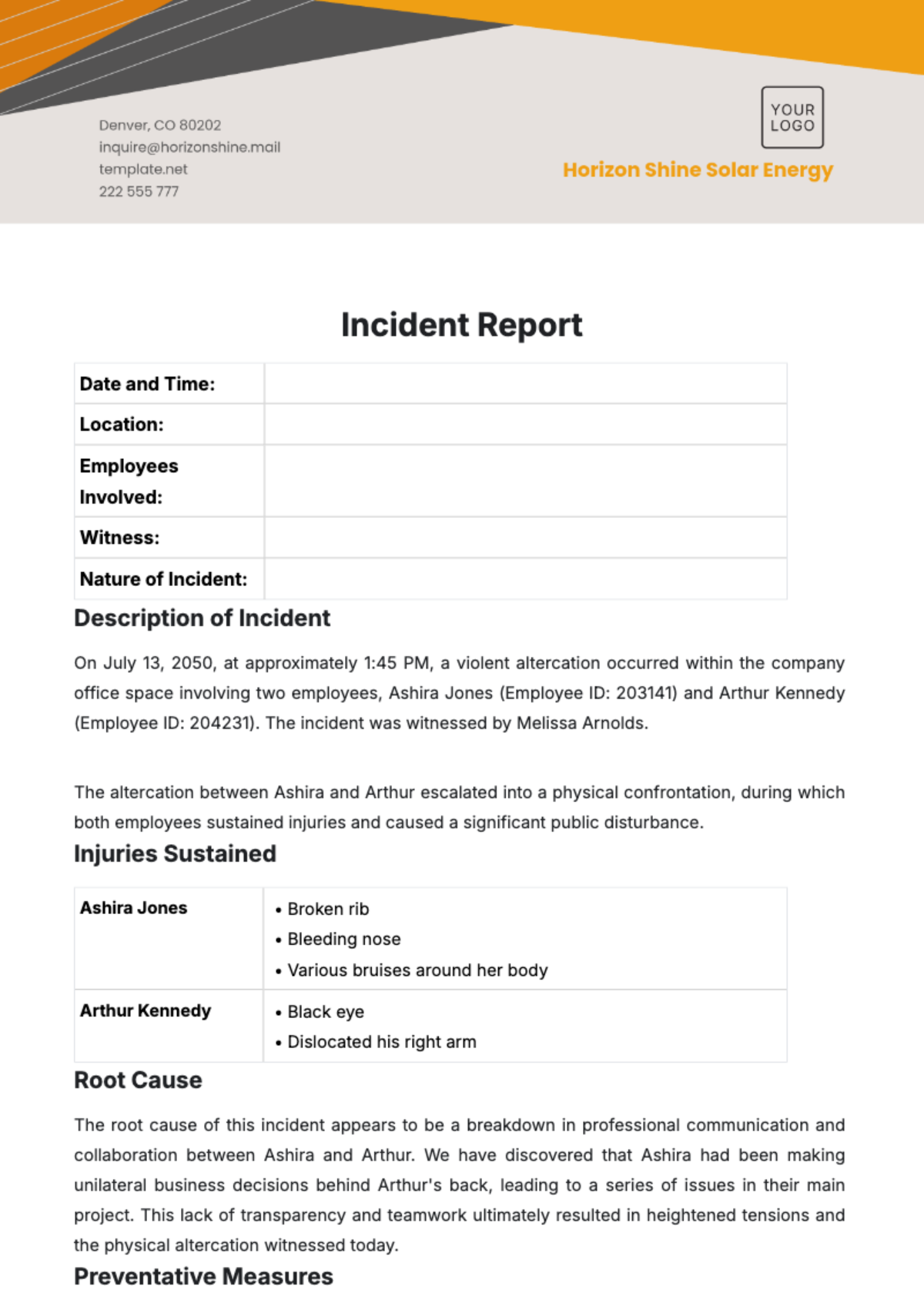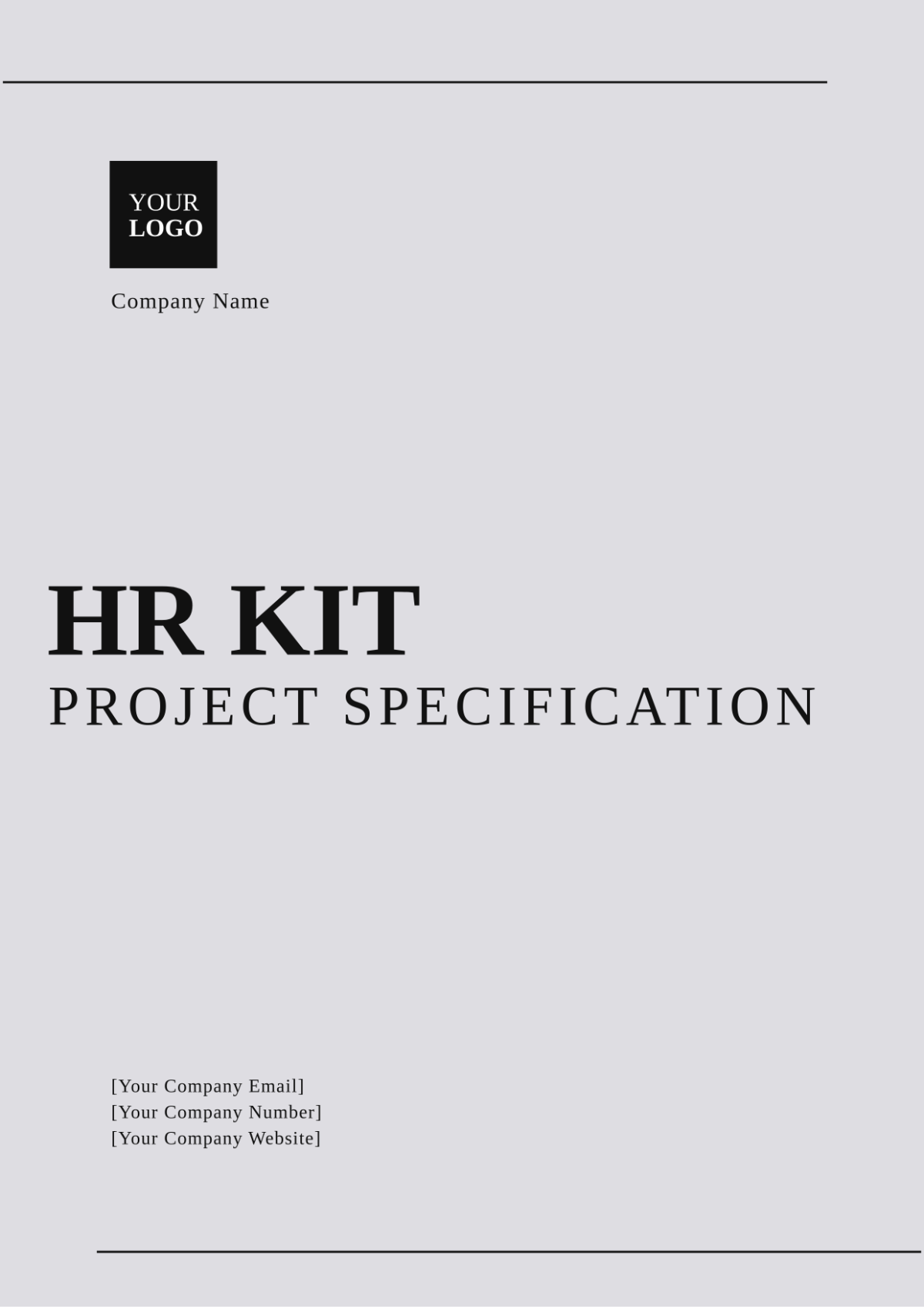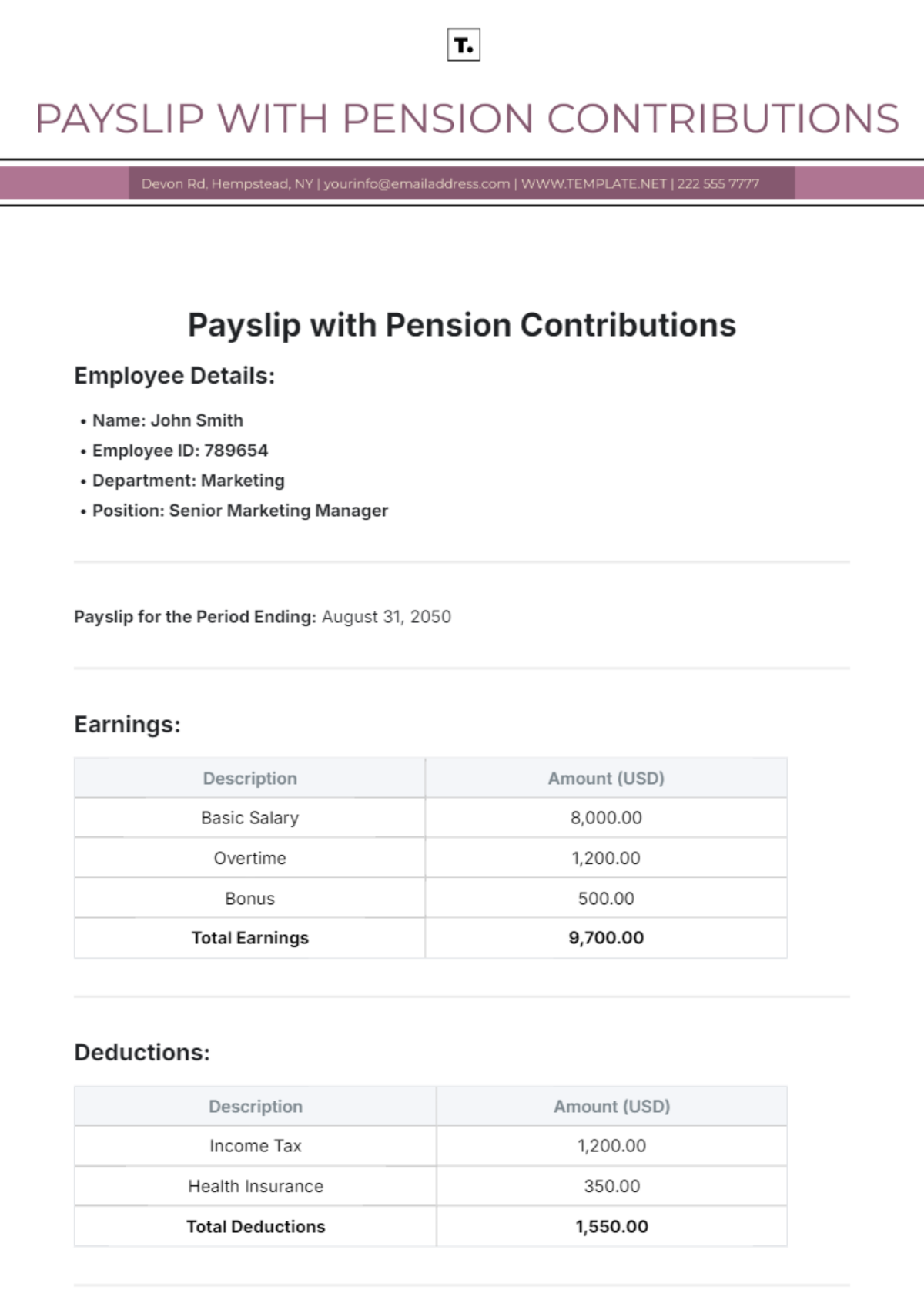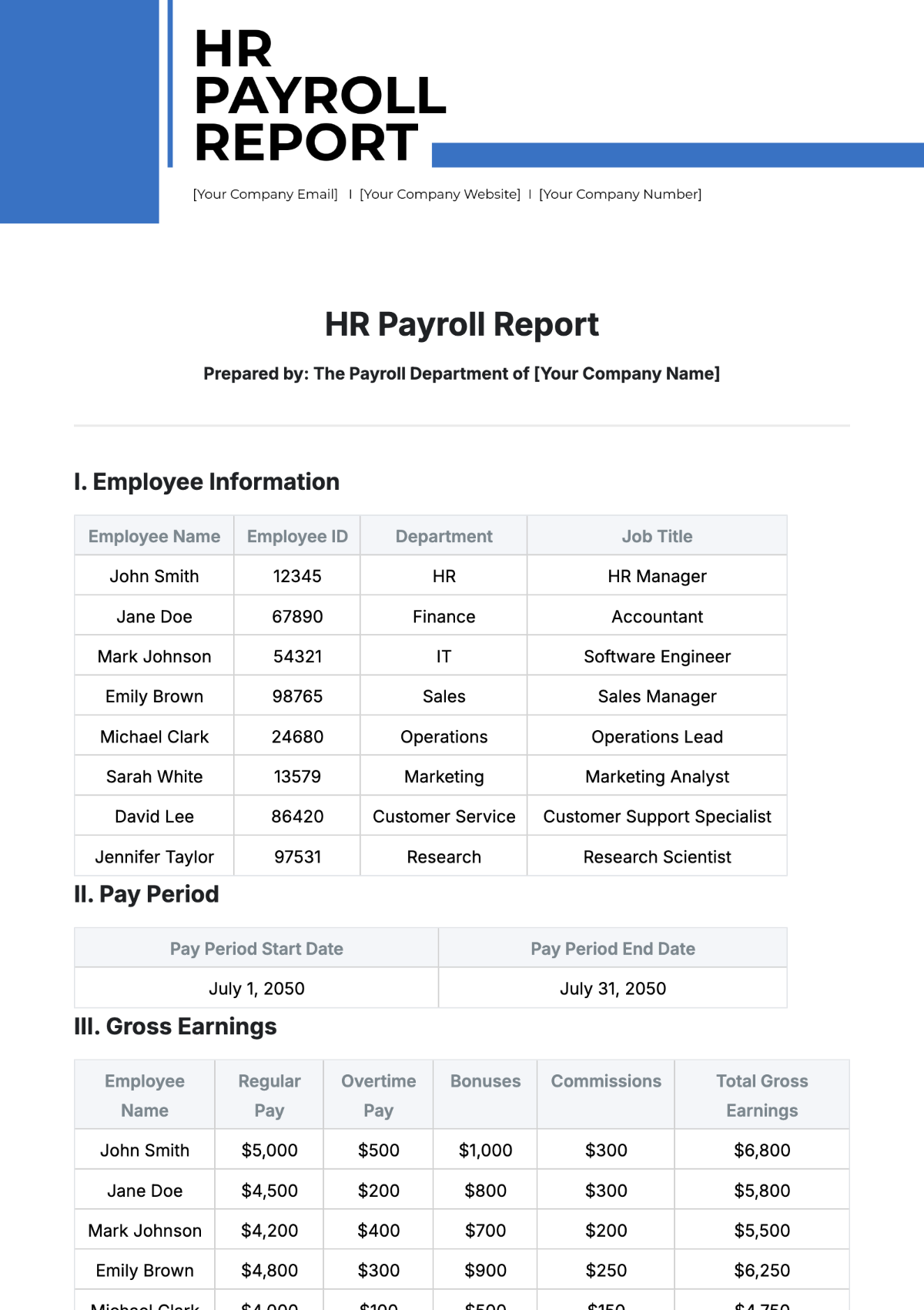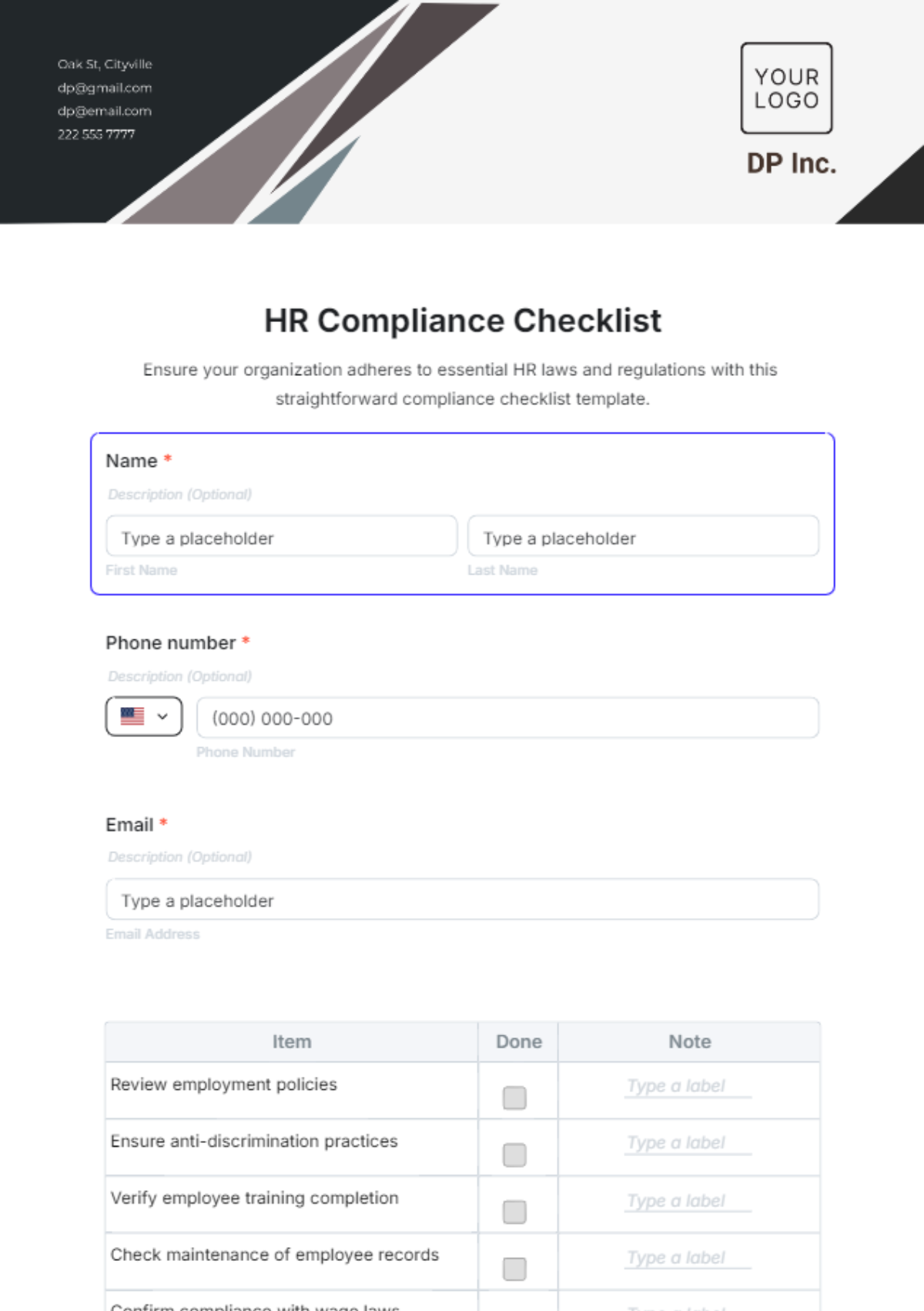Workplace Violence Prevention and Response Guide HR
Introduction
At [Your Company Name], we are deeply committed to ensuring the safety and well-being of our employees. This Workplace Violence Prevention and Response Guide has been developed to provide a comprehensive framework for preventing, identifying, and responding to workplace violence incidents. Our organization maintains a zero-tolerance stance towards any form of violence, threats, or disruptive behavior within our workplace.
Section 1: Understanding Workplace Violence
1.1 Definition of Workplace Violence
Workplace violence encompasses a wide range of behaviors and actions, including but not limited to:
Physical violence, such as hitting, pushing, or assaulting: Includes but is not limited to physical assaults, hitting, slapping, kicking, pushing, or any other intentional physical harm inflicted upon another person within the workplace premises.
Verbal threats, intimidation, or harassment: Encompasses threats, verbal abuse, intimidation, or harassment that creates a hostile or intimidating atmosphere, causing emotional distress, fear, or discomfort to individuals.
Bullying or cyberbullying: Encompasses the persistent and harmful mistreatment of employees or colleagues through offensive conduct, humiliation, or derogatory comments, whether in person or through electronic means.
Any disruptive behavior that creates a hostile work environment: Involves any disruptive or aggressive behavior that interferes with the normal course of work, disrupts the work environment, or compromises the safety of others.
Section 2: Risk Assessment
2.1 Workplace Violence Risk Assessment
To ensure a safe work environment, we conduct regular workplace violence risk assessments. These assessments consider:
The nature of job roles and interactions with the public or clients.
The geographical location of our workplaces and any specific safety concerns.
Past incidents or reports related to workplace violence.
2.2 Reporting and Data Collection
2.2.1 Incident Reporting
All employees are encouraged to report workplace violence incidents, concerns, or observed risky behaviors promptly to the HR department or their immediate supervisor.
Reports can be submitted through our secure online reporting system or through designated reporting forms available in the HR department.
2.2.2 Data Collection and Analysis
The HR department maintains a confidential database of reported incidents and concerns.
Incident data is regularly analyzed to identify trends, hotspots, or emerging issues related to workplace violence.
Findings from data analysis are used to inform and update our prevention strategies and training programs.
Section 3: Prevention Strategies
3.1 Employee Awareness and Training
We prioritize employee awareness and training to prevent workplace violence:
All employees receive mandatory training on recognizing early warning signs of violence and how to report concerns.
Our conflict resolution and de-escalation training programs empower employees to defuse potentially volatile situations.
3.2 Reporting Mechanisms
We maintain clear and confidential reporting mechanisms:
Employees can report incidents or concerns through our dedicated hotline, HR department, or their immediate supervisors.
Reports are taken seriously and investigated impartially, and appropriate actions are taken promptly.
3.3 Security Measures
Security measures have been implemented to enhance workplace safety:
Access control systems limit unauthorized entry to our facilities.
Surveillance systems and, where necessary, security personnel are in place to monitor and respond to security threats.
Regular security assessments are conducted to identify and address vulnerabilities.
Section 4: Reporting and Response Procedures
4.1 Reporting Incidents
Employees should follow these procedures when reporting workplace violence incidents:
In non-emergency situations, immediately report incidents to your supervisor or the HR department.
In emergencies or situations posing imminent danger, call 911 first and then inform your supervisor or HR as soon as it is safe to do so.
4.2 Threat Assessment and Intervention
When a threat is reported, we follow a comprehensive threat assessment and intervention process:
A trained team evaluates the credibility and seriousness of the threat.
Appropriate interventions, including counseling, disciplinary action, or legal measures, are implemented based on the assessment.
Section 5: Support for Victims and Witnesses
5.1 Support Resources
Support is available for victims and witnesses of workplace violence:
Our Employee Assistance Program (EAP) provides confidential counseling services.
We encourage all employees to seek assistance when needed, and we will provide support and resources as necessary.
Section 6: Communication and Training
6.1 Training Programs
At [Your Company Name], we recognize that effective training is a cornerstone of workplace violence prevention. Our commitment to your safety includes ongoing education to equip you with the knowledge and skills needed to recognize, respond to, and prevent workplace violence incidents. Our comprehensive training programs include the following components:
6.1.1 Awareness Training
Objective: To raise awareness among all employees about the potential risks of workplace violence and the importance of reporting concerns promptly.
Content: This training covers:
Definition of workplace violence and its various forms.
Early warning signs and risk factors.
The organization's reporting mechanisms.
Employee rights and protections.
Delivery: Awareness training is provided during employee onboarding and annually thereafter. It may include in-person sessions, online modules, and informational materials.
6.1.2 Conflict Resolution and De-escalation Training
Objective: To provide employees with the skills and techniques necessary to defuse potentially volatile situations and prevent workplace violence.
Content: This training includes:
Strategies for effective communication and conflict resolution.
De-escalation techniques.
Recognizing and managing anger and frustration.
Role-playing exercises and real-life scenarios.
Delivery: Conflict resolution and de-escalation training are conducted periodically through interactive workshops, facilitated discussions, and role-playing exercises.
6.1.3 Reporting Procedures Training
Objective: To ensure that all employees understand the organization's reporting mechanisms and know how to report incidents or concerns effectively.
Content: This training covers:
How to report workplace violence incidents.
The importance of prompt reporting.
Confidentiality and protections for employees who report in good faith.
Delivery: Reporting procedures training is provided during employee onboarding, and employees are reminded of these procedures regularly through workplace communications and updates.
6.1.4 Management Training
Objective: To equip managers and supervisors with the skills and knowledge necessary to effectively respond to reports of workplace violence, conduct investigations, and implement appropriate interventions.
Content: This training includes:
Understanding legal and regulatory obligations.
Handling reports and investigations.
Conducting threat assessments.
Implementing corrective and preventive actions.
Delivery: Management training is provided to supervisors and managers regularly through workshops, seminars, and online resources.
6.1.5 Emergency Response Training
Objective: To ensure that employees know how to respond to workplace violence incidents in progress, including how to seek safety and contact emergency services.
Content: This training includes:
Evacuation procedures.
Safe shelter locations.
When and how to contact emergency services (911).
Employee roles during emergencies.
Delivery: Emergency response training is part of our emergency preparedness program and is conducted annually, with drills and simulations as needed.
6.2 Confidentiality and Reporting Protection
We want employees to feel secure when reporting incidents:
Reports are treated confidentially, and employees' identities are protected to the extent permitted by law.
Retaliation against employees who report incidents in good faith is strictly prohibited and will be addressed accordingly.
Section 7: Legal Compliance
7.1 Compliance with Laws
At [Your Company Name], we are committed to upholding the highest standards of legal and ethical conduct when it comes to workplace violence prevention. We ensure full compliance with all applicable federal, state, and local laws and regulations that pertain to workplace safety, security, and violence prevention. Key laws and regulations that guide our efforts include but are not limited to:
7.1.1 Federal Occupational Safety and Health Act (OSHA)
Federal OSHA mandates that employers provide a safe and healthful workplace for employees. It requires organizations to identify and mitigate workplace hazards, including those related to violence.
7.1.2 State Workplace Violence Prevention Regulations
We adhere to state-specific regulations governing workplace violence prevention. These regulations vary by state but often require employers to develop and implement violence prevention programs.
7.1.3 Workplace Violence Policy
In addition to legal requirements, [Your Company Name] has established its Workplace Violence Policy to outline our specific commitment, approach, and procedures for preventing and responding to workplace violence. This policy is accessible to all employees and is a foundational document guiding our efforts.
7.1.4 Reporting Requirements
We fully comply with all legal reporting requirements related to workplace violence incidents. This includes reporting incidents to the appropriate authorities, such as law enforcement agencies or regulatory bodies, when necessary.
7.1.5 Employee Rights
We respect and protect the rights of our employees as stipulated by relevant labor laws and regulations. This includes ensuring that employees are aware of their rights related to workplace violence reporting, confidentiality, and protection from retaliation.
7.1.6 Training Obligations
Legal obligations regarding workplace violence training are met. This includes providing employees with the necessary training to recognize, report, and prevent workplace violence incidents.
Section 8: Contact Information
8.1 Reporting Contacts
In the event of a workplace violence incident or concern, employees can contact the following:
HR Department: [Your Number and Email Address]
Emergency Services (in case of emergencies): 911
Section 9: Appendices
9.1 Sample Incident Report Form
A sample incident report form is provided for employees to document workplace violence incidents, concerns, or observations. This form includes fields for incident details, witnesses, and a description of the incident. It is essential to complete this form accurately and promptly when reporting workplace violence.
9.2 Emergency Contact Information
In the event of a workplace violence incident or any emergency, it is crucial to have immediate access to emergency contacts. The following emergency contact information is provided for your reference:
Emergency Services (Police, Fire, Medical): 911
[Your Company Name] Security Department: 222 555 7777
Local Crisis Helpline: 222 555 7777
Employee Assistance Program (EAP): 222 555 7777
9.3 Relevant Legal References
It is essential to be aware of the legal framework related to workplace violence prevention and response. The following legal references are provided for your reference:
Federal Occupational Safety and Health Act (OSHA)
State Workplace Violence Prevention Regulations
[Your Company Name] Workplace Violence Policy
9.4 Additional Resources
In addition to the appendices provided, employees can access a range of additional resources related to workplace violence prevention, including:
Workplace Violence Prevention Training Materials
Conflict Resolution and De-escalation Resources
Contact information for HR and security personnel:
HR Department: [Your Number]
Security Department: 222 555 7777
We encourage all employees to familiarize themselves with these resources and to report any concerns or incidents related to workplace violence promptly. Your active participation is vital in maintaining a safe and secure workplace environment.


